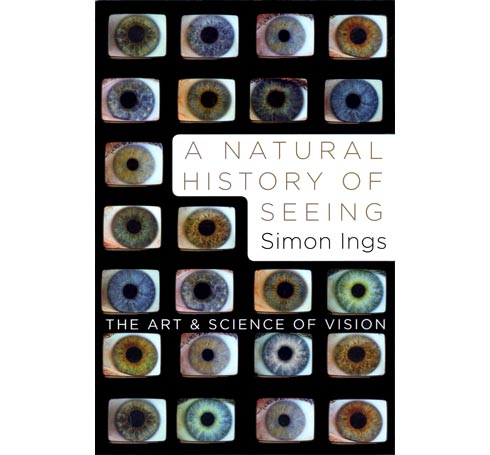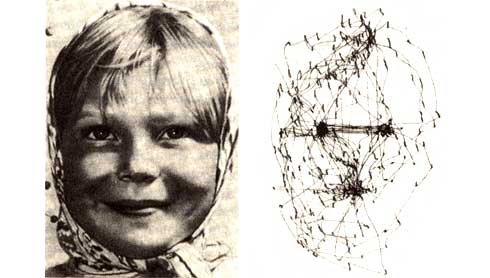“A Natural History of Seeing” by Simon Ings
December 3, 2008

Light hits a rod in my eye, and bleaches pigment within. A cascade of chemical events shuts down the rod’s ‘ion channels’ — proteins that pass an electrical current around the cell. With its ion channels shut down, production of a chemical, glutamate, is stopped. This sudden chemical ‘silence’ excites a neighbouring nerve sell and sets it chattering. News passes from neighbour to neighbour, from nerve cell to nerve cell: the beginning of vision.
Novelist and science writer Simon Ings has produced a phenomenal book on vision, one that contains gems of information on every page. This is selling science to the public at the highest level; one that is as engaging and compellingly readable as any commercial thriller starring a government assassin named Bourne or Bond. Everyone with eyes should read this book. Get your copy here.
Here’s one example: below is a reproduction of Alfred Yarbus’ record of eye movements while studying a picture of a girl’s face. The jittery line drawing on the right shows how frantic our eye movements are, even when we believe we are taking in an object ‘at a glance.’

“. . .in reality my eyes are never still. Every third of second they jolt or ‘saccade’ moving my gaze from one part of an object to another. My single ‘glance’ is a multitude of little fixations, not unlike the twitching of an insect’s antennae, or a mouse’s whiskers. . .”
Comments
Got something to say?
You must be logged in to post a comment.
